Pallet Inverter: How to Prevent Damage During Pallet Flips of Rolls?
You have a perfect, high-value roll of steel, paper, or film sitting on your factory floor. It’s ready for the next stage, but there’s a problem: it's on the wrong pallet. You need to flip it, a simple 180-degree rotation. But this seemingly simple action is filled with risk. One wrong move, one moment of excessive pressure or a sudden jolt, and your perfect product is suddenly damaged. The edges are crushed, the surface is scored, or the layers have shifted. This isn't just a minor issue; it's lost revenue, production delays, and a mark against your reputation for quality. For a manager or owner, this is a recurring nightmare that directly impacts the bottom line. The solution isn't to stop flipping pallets; it's to master the process with the right equipment and knowledge. A well-designed pallet inverter, operated correctly, is the key to turning this point of risk into a routine, damage-free step in your production line.
To prevent damage to rolls during pallet flips, you must use a pallet inverter specifically designed for cylindrical loads. This requires three critical elements: precisely adjustable clamping pressure to hold the roll securely without crushing it, smooth and controlled rotation speed to avoid layer shifting, and soft, non-abrasive contact surfaces to protect the roll's outer layers. Combining the right machine with proper operator training is the most effective strategy for damage-free handling.
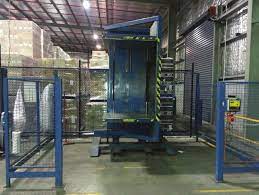
Now that you know the core principles, you might think the problem is solved. But the details are where success is truly found. Why is "gentle" handling so important for something that weighs several tons? What specific features should you look for when you're comparing different machines? How do you find the perfect balance between clamping pressure and rotation speed? Let's dive deeper into these questions. As an engineer who has spent his career in this field, I want to share the insights that will help you protect your products, just as I've helped many clients grow their businesses by focusing on these critical details.
Why is Gentle Handling So Critical for Your Rolls?
You look at a massive roll of steel or a dense roll of paper and see strength. It's heavy, solid, and seems almost indestructible. It's easy to think that it can withstand the rigors of the factory floor. But this is a dangerous assumption. The true value of that roll lies in its absolute perfection. The edges are cut to a precise tolerance, the surface is flawless, and the internal structure is tightly wound and uniform. Even a tiny dent, a small scratch, or a slight crushing of the core can render the entire roll useless for its intended application, especially in demanding industries like automotive or high-end printing. This waste isn't just a line item on a spreadsheet; it eats directly into your profit margins and undermines goals like reducing overall operating costs.
Gentle handling is so critical for rolls because their financial value is tied directly to their physical integrity. Any form of damage, whether to the surface, the edges, or the core, can lead to complete customer rejection, costly production stoppages for your client, and financial losses that are many times greater than the investment in proper handling equipment. Protecting the roll is protecting your profit.
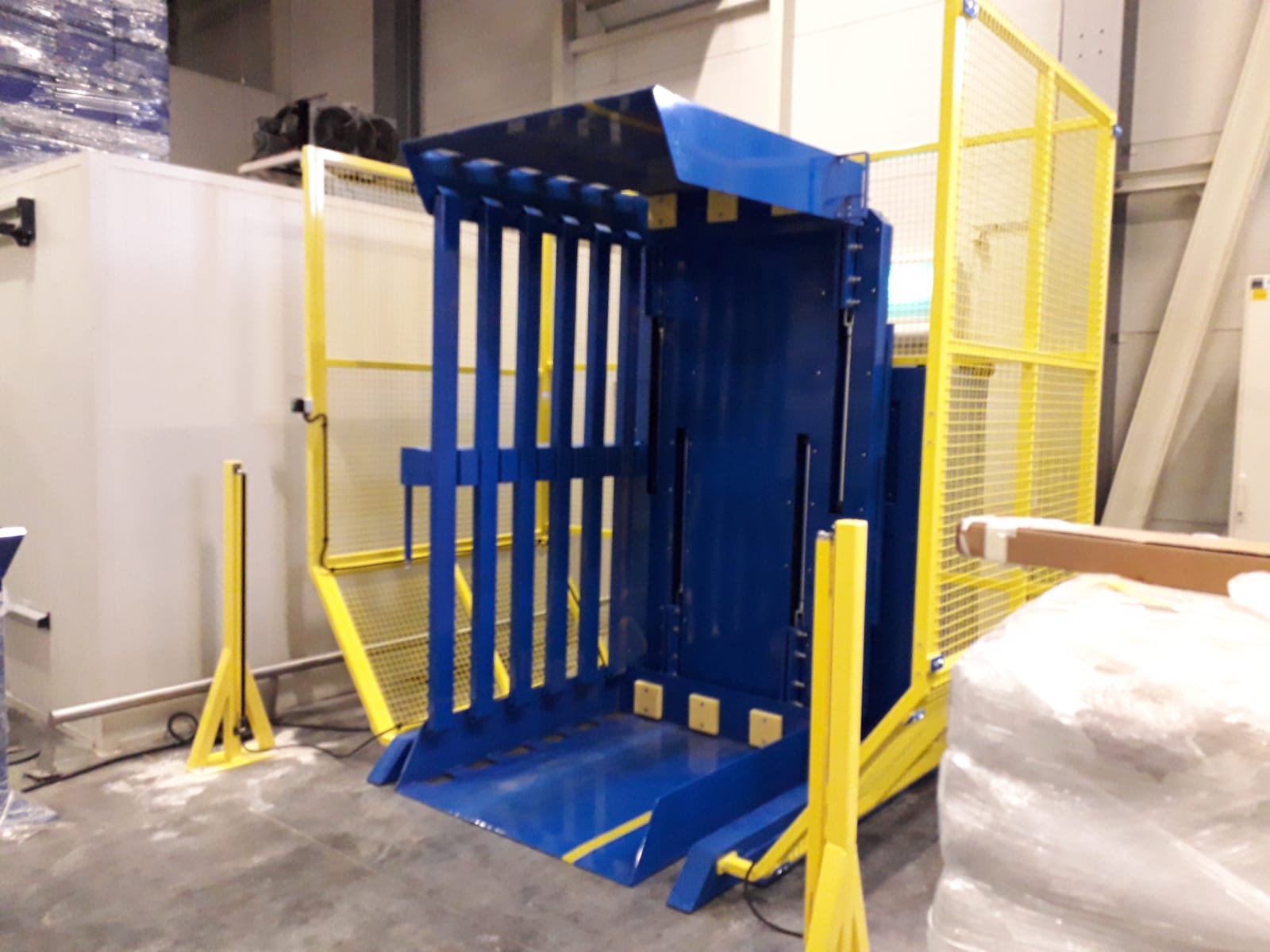
From my experience designing and building these machines, I've learned that "damage" is not a single concept. It comes in several forms, each with its own cause and its own devastating financial consequence. Understanding these specific types of damage is the first step toward preventing them. It shifts your mindset from simply moving a heavy object to carefully protecting a high-value, sensitive asset. Let's break down the common types of damage and their real-world impact.
The Anatomy of Roll Damage
The most common issues we see from improper handling fall into a few key categories. Each one can be traced back to a failure in the handling process, often during a seemingly simple pallet exchange.
-
Edge Damage and Crushing: This is perhaps the most frequent and costly type of damage. The edges of a roll are its most vulnerable point. If a pallet inverter applies uneven or excessive pressure, the edges can be easily dented, flattened, or crushed. For materials that will be fed into high-speed automated machinery, a damaged edge can cause misfeeds, tearing, and costly line stoppages for your customer.
-
Surface Abrasion and Scoring: The outer layers of a roll of steel, aluminum, or film are often the final product surface. Scratches, scuffs, and scores from rough handling or a slipping load are unacceptable. This often happens when the clamping surfaces of the inverter are made of hard material or when the clamping force is too low, allowing the roll to shift and scrape against the machine during rotation.
-
Telescoping: This occurs when the inner layers of the roll shift or slide out from the rest of the roll, creating a cone or telescope shape. It's typically caused by sudden starts or stops during rotation. The inertia of the heavy roll overcomes the friction between its layers, causing them to move. A telescoped roll is often impossible to fix and is a total loss.
-
Core Deformation: The core is the foundation of the roll. If the clamping pressure is too high, it can crush or deform the cardboard or metal core. A damaged core makes it impossible to mount the roll on a machine's unwind stand, making the entire roll unusable without a difficult and time-consuming re-coring process.
To put this in perspective for a business owner like Javier Morales, who analyzes every investment for its return, consider the real cost of this damage.
| Damage Type | Direct Cost | Indirect Cost | Impact on Business Goals |
|---|---|---|---|
| Edge Damage | Value of scrapped material | Customer complaints, potential loss of contract | Hurts profit margin, damages quality reputation |
| Surface Abrasion | Downgrading product to a lower price point | Rework/polishing costs (if possible), freight for returns | Reduces revenue per unit, increases labor costs |
| Telescoping | Total loss of the roll | Production time lost to deal with the issue | Lowers产能利用率 (capacity utilization), increases waste |
| Core Deformation | Cost of re-coring labor and materials | Downtime on customer's production line | Creates customer friction, risks future business |
Protecting your rolls is not an expense; it is a direct investment in achieving higher capacity utilization, reducing operating costs, and maintaining the quality that keeps your customers loyal.
What Key Features in a Pallet Inverter Protect Your Rolls?
When you are in the market for a pallet inverter, it's easy to get lost in specifications. Many machines on the market look similar and claim to perform the same basic function: turning a load over. This can lead you to believe that any standard inverter will do the job. But this is a critical mistake. Choosing a generic inverter that isn't specifically engineered for the unique demands of heavy, cylindrical rolls is like asking a construction worker to perform surgery. The tool is simply not right for the task, and the risk of damaging your valuable product is incredibly high. This directly threatens your operational goals of increasing efficiency and reducing waste.
To truly protect your rolls, you must look for specific features that turn a pallet inverter from a potential liability into a reliable production asset. The most important protective features are adjustable hydraulic clamping pressure, soft and non-damaging contact pads, a heavy-duty frame that prevents flexing under load, and a rotation system designed for smooth, controlled movement. These key components work in harmony to secure the roll firmly but gently throughout the entire 180-degree flip.
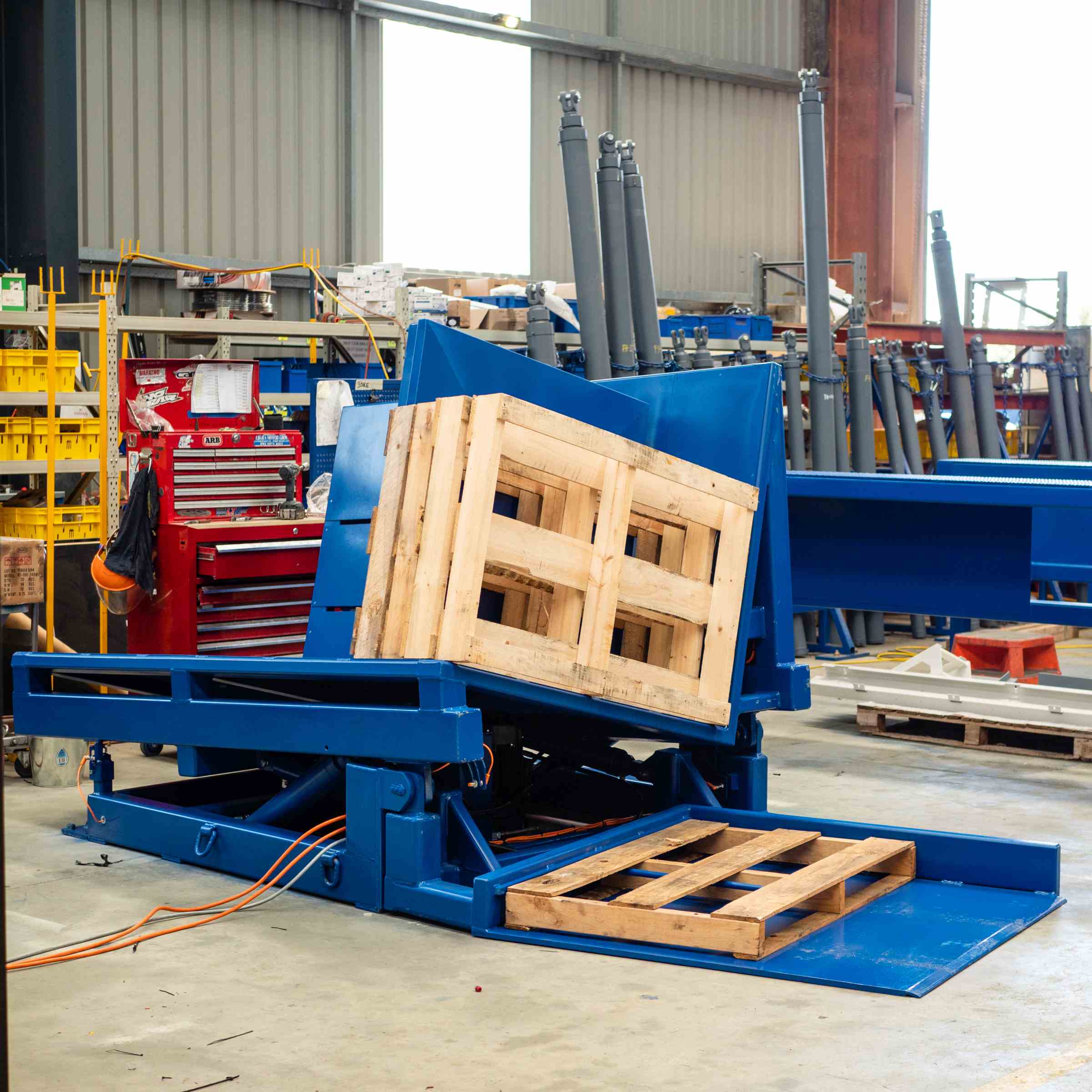
Over my career, I've seen clients try to save money by using a standard box-and-crate inverter for their steel coils. The results were always disappointing and often costly. A standard machine simply lacks the finesse required. Based on these experiences, we at SHJLPACK have focused on perfecting the features that matter most for roll handling. Let's examine these critical features in more detail, so you know exactly what to look for.
Engineering for Protection: A Feature Breakdown
A pallet inverter designed for rolls is more than just a rotator; it's a precision handling system. When evaluating a machine, you need to dissect its components and understand how they contribute to a safe, damage-free process.
-
Adjustable Clamping Pressure Control: This is the single most important feature. A roll of thin aluminum foil cannot withstand the same clamping force as a solid roll of hot-rolled steel. A quality roll-handling inverter must have a hydraulic system with a pressure relief valve and a gauge that allows operators to set the precise pressure needed for each product. One-size-fits-all pressure is a recipe for disaster. The best systems allow you to pre-program settings for different roll types, ensuring consistency and removing operator guesswork.
-
Engineered Contact Surfaces: The parts of the machine that physically touch your roll are critical. Hard steel surfaces will scratch and dent your product. Look for inverters that use thick, durable-yet-soft materials for their clamping pads. Polyurethane (PU) or heavy-duty rubber are excellent choices. Furthermore, the shape matters. Flat clamping pads concentrate force on a narrow line. A better design uses a V-shaped or curved cradle that distributes the clamping force more evenly across the roll's surface, reducing the risk of damage.
-
Robust Structural Integrity: A 10-ton steel coil exerts immense force on a machine's frame during rotation. If the frame is built from thin steel or is poorly designed, it can flex and twist under load. This flexing causes the clamping pressure to become uneven, concentrating stress on certain points of the roll and leading to damage. A robust, non-flexing frame made from heavy-gauge steel is essential for maintaining consistent pressure and ensuring the machine's long-term durability, which is key for someone like Javier who is dealing with aging equipment and needs new investments to last.
-
Smooth and Controlled Rotation: The rotation itself must be smooth and free of any jerking or sudden movements. Abrupt motions can cause the roll to telescope. This is controlled by the drive system. Hydraulic systems should use proportional valves for a soft start and stop. Electric-driven models should use a Variable Frequency Drive (VFD) to gently ramp the motor speed up and down. This level of control is not a luxury; it is a necessity for safe roll handling.
Here is a simple comparison to illustrate the difference:
| Feature | Standard Pallet Inverter | Roll-Specific Pallet Inverter | Why It Matters for Rolls |
|---|---|---|---|
| Clamping Control | Often fixed or has limited adjustment | Fully adjustable hydraulic pressure with gauge | Prevents crushing the core or the roll itself |
| Contact Surfaces | Flat, painted steel plates | V-shaped cradle with thick PU or rubber pads | Distributes force evenly, prevents surface scratches |
| Frame | Lighter-duty, designed for boxed loads | Heavy-duty, reinforced steel construction | Prevents twisting under heavy load, ensures even clamping |
| Rotation System | Basic on/off motor or simple hydraulics | VFD-controlled electric or hydraulic soft start/stop | Prevents telescoping from sudden inertia changes |
Investing in a machine with these specific features is a direct investment in your product quality and operational efficiency.
How Do Clamping Pressure and Rotation Speed Affect Roll Safety?
You've done your research and invested in a high-quality pallet inverter with all the right features. The machine is installed on your factory floor. You might think the job is done—just turn it on and start flipping rolls. But this is a critical moment where many operations fail. Having the right machine is only half the battle. Using the wrong settings for clamping pressure and rotation speed is just as damaging as using the wrong equipment in the first place. Too much pressure will crush the delicate core of a paper roll. Too little pressure, and a heavy steel coil will slip during rotation, causing severe abrasion to its surface. A rotation that is too fast or jerky will almost certainly cause the roll's layers to telescope.
Clamping pressure and rotation speed have a direct and immediate impact on the safety and integrity of your rolls. Excessive clamping force can cause irreversible crushing damage to the roll's core and edges, while insufficient force allows the roll to shift, leading to abrasion and surface damage. Similarly, a rotation speed that is too fast or erratic creates inertial forces that can cause the roll's layers to telescope. Finding the precise, repeatable balance of these two settings for each type of roll you handle is absolutely essential for safe and damage-free operation.
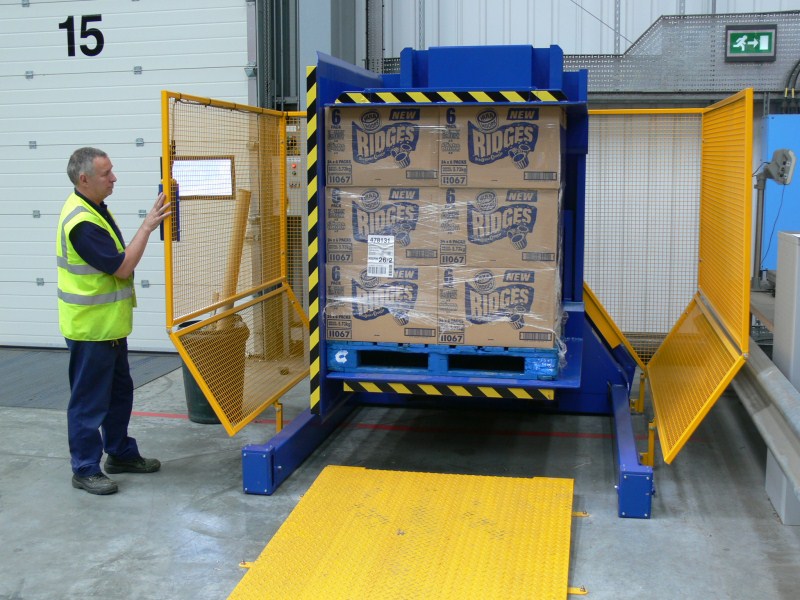
This isn't about theory; it's about practical, hands-on control. In my work with clients, I've seen perfect machines produce damaged goods simply because the operators were not trained to manage these settings properly. Mastering the operational parameters is where you unlock the full potential of your investment and ensure that every single pallet flip is a success. It's a process of tuning and refinement that pays huge dividends in reduced waste and improved quality.
Dialing in the Perfect Settings
Think of operating a pallet inverter like tuning a musical instrument. You need to find the perfect harmony between pressure and speed to get the right result. This requires a methodical approach, not guesswork. Here is how you can systematically find and maintain the optimal settings for your operations.
-
Finding the Sweet Spot for Clamping Pressure: The goal is to apply just enough force to hold the roll securely, and no more. The ideal pressure depends on the roll's weight, diameter, and the material's fragility.
- Start Low: Always begin with a lower pressure setting than you think you need.
- Test and Observe: Clamp the roll and perform a very slow, partial rotation. Watch and listen for any signs of slipping. If the roll shifts, release it, increase the pressure slightly, and try again.
- Document Everything: Once you find the minimum pressure that holds the roll securely without any movement, record that setting. Create a chart or a logbook that lists the product type, weight, and the corresponding correct pressure setting. This is critical for consistency, especially with multiple operators or shifts. This procedural approach is vital for achieving goals like the 95% equipment uptime Javier is targeting because it prevents errors and rework.
-
Mastering the Rotation Speed: The key to safe rotation is smoothness. The goal is to avoid any sudden changes in momentum that could unsettle the layers of the roll.
- Use Soft-Start/Stop: Ensure the machine’s soft-start and soft-stop features (from a VFD or proportional hydraulic valve) are properly configured. The rotation should begin and end gently, with a smooth ramp-up and ramp-down in speed.
- Slower is Safer: There is rarely a benefit to rotating a heavy roll quickly. A steady, controlled rotation speed is far safer than a fast one. A cycle time that is a few seconds longer is an insignificant price to pay for avoiding a scrapped roll worth thousands of dollars.
- Match Speed to the Product: Very sensitive materials, like thin films or foils, may require a slower rotation speed than a robust roll of hot-rolled steel to prevent telescoping. Again, test and document the optimal speed for each product type.
Here’s a practical troubleshooting guide based on common problems I've seen in the field:
| Problem Observed | Likely Cause (Pressure/Speed) | Solution |
|---|---|---|
| Roll is slipping or has surface scuffs | Clamping pressure is too low. | Increase clamping pressure in small increments until the roll is secure. |
| Core of the roll is crushed or oval | Clamping pressure is too high. | Reduce the clamping pressure. Verify the correct setting for this roll type. |
| Roll layers have telescoped | Rotation speed is too fast or jerky. | Reduce the rotation speed. Check that the soft-start/stop is functioning correctly. |
| Edges of the roll are dented or nicked | Uneven clamping or improper alignment. | Check if the roll is centered. Verify the V-cradle is correctly distributing force. |
By treating the setup process with this level of engineering discipline, you transform the pallet flip from a moment of risk into a reliable, repeatable, and safe part of your workflow.
Vincent's Insight: Beyond the Machine – A Partnership for Success
So, you have researched the features, understood the operational settings, and you are ready to make a decision on a pallet inverter. You might think that once the machine is purchased and installed, your work is done. But I encourage you to think bigger. As an owner or a CEO like Javier, you are not just buying a piece of equipment; you are investing in a capability for your plant. What happens in two years when your production needs change and you're handling a new type of coil? What happens when a sensor fails at 2 AM, and you need support? Or, more importantly, what happens when you decide to implement a new MES system as part of your digital transformation goal, and you need this machine to communicate with your network?
This is where the fundamental difference between a simple supplier and a true strategic partner becomes crystal clear. A supplier sells you a box and walks away. A partner understands your long-term goals and provides the support and expertise to help you achieve them. At SHJLPACK, our philosophy is built on this idea of partnership. A machine is just metal and wires without the knowledge, service, and forward-thinking support to make it a valuable part of your entire operation for years to come.
Choosing the right pallet inverter is about more than just the technical specifications on a data sheet. It's about choosing a partner who deeply understands your challenges and is committed to your success. This partnership should cover everything from initial selection and customization to seamless integration with your digital factory systems and long-term maintenance, ensuring your investment delivers a strong return for its entire lifecycle.
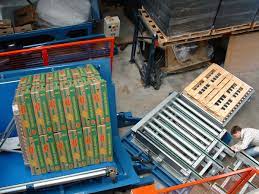
I started my journey as an engineer on the factory floor. I know the pressure you feel when a production line stops. I've felt the frustration of equipment that isn't up to the task. That experience is why, when I founded my own factory, I focused on building solutions, not just machines. I want to share how this partnership approach directly addresses the real challenges that leaders like Javier face every day.
A Solution Tailored to Your Goals
When we look at a project, we don't just see a request for a pallet inverter. We see your bigger picture, your challenges, and your goals.
-
Addressing Aging Equipment and ROI: You have equipment that is over 15 years old and failing. When you invest in a new machine, you need it to last. A well-built pallet inverter from a dedicated partner is not a short-term fix; it's a long-term asset designed for a 15-to-20-year service life. We build with durability in mind because I know the high cost of frequent replacement. The Return on Investment isn't just calculated by the number of rolls you save from damage this year; it's calculated by a decade or more of reliable, uninterrupted operation.
-
Driving Your Digital Transformation: You have a goal to deploy MES, IoT, and data analytics. A modern piece of equipment should not be an isolated, "dumb" machine. It should be a smart node in your digital ecosystem. We can equip our pallet inverters with the necessary sensors and communication protocols (like OPC-UA or Modbus TCP/IP) to feed data directly into your plant management software. It can report cycle times, clamping pressures used, and motor status. This data is crucial for predictive maintenance, helping you achieve that ambitious 95% uptime goal by fixing problems before they cause a shutdown.
-
Meeting Your Cost Reduction Targets: Your goal is to reduce overall operating costs by 8%. Every single roll that gets damaged is a direct hit to that target. Our partnership focuses on eliminating that source of waste entirely. But it goes further. By providing a reliable, automated process, you can optimize labor and increase throughput. The solution we provide is a total solution—it impacts your material costs, labor costs, and operational efficiency, all contributing to a healthier bottom line.
My journey in this industry has taught me that success comes from collaboration. I became financially independent and built a successful business because I worked closely with my clients, understood their problems, and helped them grow. Now, my mission with SHJLPACK is to give back that same level of partnership and knowledge. We are here to be your expert resource, your long-term support system, and your partner in achieving your most ambitious goals.
Conclusion
A pallet inverter is a vital tool for protecting valuable rolls. Choosing a machine with the right features, using correct operational settings, and working with a supportive partner ensures damage-free, efficient handling.


